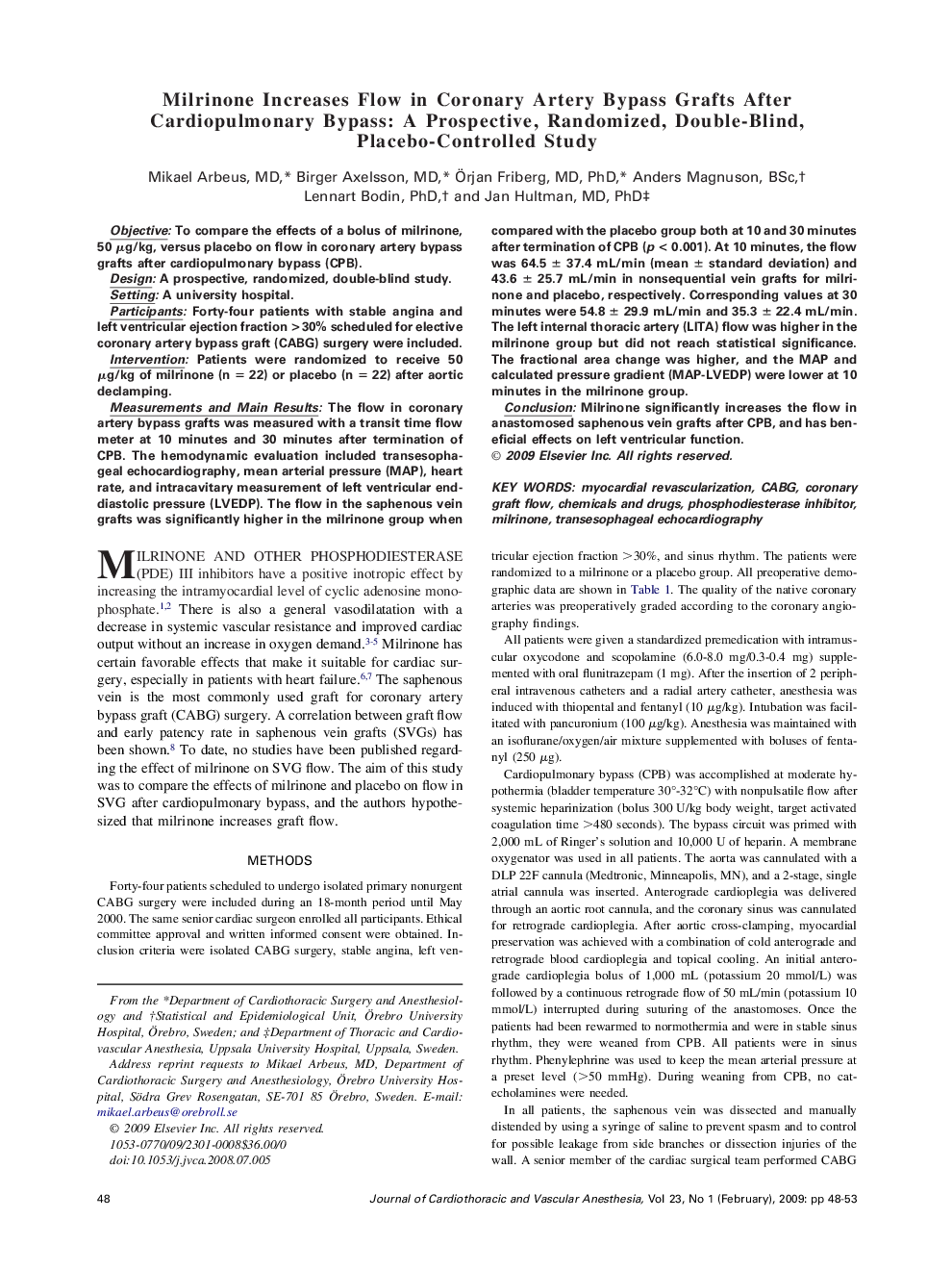| Article ID | Journal | Published Year | Pages | File Type |
|---|---|---|---|---|
| 2760926 | Journal of Cardiothoracic and Vascular Anesthesia | 2009 | 6 Pages |
ObjectiveTo compare the effects of a bolus of milrinone, 50 μg/kg, versus placebo on flow in coronary artery bypass grafts after cardiopulmonary bypass (CPB).DesignA prospective, randomized, double-blind study.SettingA university hospital.ParticipantsForty-four patients with stable angina and left ventricular ejection fraction >30% scheduled for elective coronary artery bypass graft (CABG) surgery were included.InterventionPatients were randomized to receive 50 μg/kg of milrinone (n = 22) or placebo (n = 22) after aortic declamping.Measurements and Main ResultsThe flow in coronary artery bypass grafts was measured with a transit time flow meter at 10 minutes and 30 minutes after termination of CPB. The hemodynamic evaluation included transesophageal echocardiography, mean arterial pressure (MAP), heart rate, and intracavitary measurement of left ventricular end-diastolic pressure (LVEDP). The flow in the saphenous vein grafts was significantly higher in the milrinone group when compared with the placebo group both at 10 and 30 minutes after termination of CPB (p < 0.001). At 10 minutes, the flow was 64.5 ± 37.4 mL/min (mean ± standard deviation) and 43.6 ± 25.7 mL/min in nonsequential vein grafts for milrinone and placebo, respectively. Corresponding values at 30 minutes were 54.8 ± 29.9 mL/min and 35.3 ± 22.4 mL/min. The left internal thoracic artery (LITA) flow was higher in the milrinone group but did not reach statistical significance. The fractional area change was higher, and the MAP and calculated pressure gradient (MAP-LVEDP) were lower at 10 minutes in the milrinone group.ConclusionMilrinone significantly increases the flow in anastomosed saphenous vein grafts after CPB, and has beneficial effects on left ventricular function.
